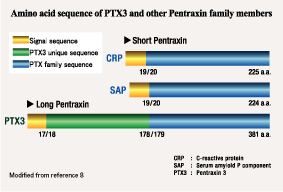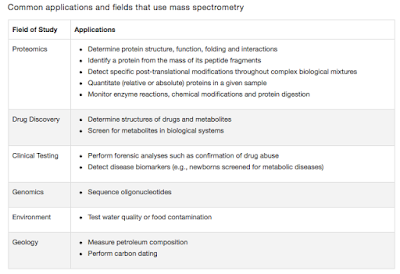A well studied marker impress me
Hello folks. In the last one week I have been thinking of many different topics to post. There is so much in the world of microbiology to select. So, I thought why not post something on immunology. After all, Medical Microbiology significantly attributes much to elegance of Immunology.
Pentraxins are a superfamily of molecules, well conserved over the evolutionary process, containing a very characteristic pentraxin domain. All the members of this family share an 8 aalong conserved sequence (HxCxS/TWxS, in which x is any amino acid) in the pentraxin domain, called pentraxin signature.
Pentraxins are a superfamily of molecules, well conserved over the evolutionary process, containing a very characteristic pentraxin domain. All the members of this family share an 8 aalong conserved sequence (HxCxS/TWxS, in which x is any amino acid) in the pentraxin domain, called pentraxin signature.
Fig 1: Amino acid sequence of pentraxin members (Source)
- Short Pentraxins. E.g.: C-reactive protein (CRP) and serum amyloid P-component (SAP)
- Long Pentraxins. E.g.: Pentraxin 3 (PTX3)

Fig 2: Three-dimensional structure of human C - reactive protein (CRP). (Link)
CRP was the first purified pentraxin, which was named after its ability to bind in a calcium-dependent fashion the C-polysaccharide of Streptococcus pneumoniae. Short pentraxins are often involved in acute phase reactions in a Ca2+ dependent manner and produced by the hepatic tissue.
The long pentraxin prototype is PTX3. It is produced in a variety of tissues and is involved with inflammation. PTX3 interacts with several ligands, including growth factors, extracellular matrix component and selected pathogens, playing a role in complement activation and facilitating pathogen recognition by phagocytes. This is made possible by interacting with specific pattern recognition molecules.

Fig 3: Pentraxin in humoral immunity
I bet u heard of Atherosclerosis. In simple terms, it is a condition where the inner parts of arterial blood vessels (which carry oxygenated blood to various parts of body), forms plaque and reduces the lumen diameter. This often leads to various conditions. (For details click here)
So, if we could detect this perhaps in earlier stages, we could improve the life quality of the victim. For this, we need a marker. CRP was often used as a marker but with little significance. CRP is an acute phase protein, and levels fluctuate in many conditions. Moreover, the CRP levels are diagnostic only at later stages. This desperately needs a better marker. Almost for more than 4 years now, PTX3 was considered as a possible marker and much was research was done (Refer Savchenko A etal)
In a recently published study in PloS one by Michael Knoflach, it was found that the PTX3 is independently associated with atherosclerosis and manifest cardiovascular disease but not early vessel pathology.
For die hard fans of microbiology, i would like to make an additional statement. Pentraxin3 is a better marker of dengue infection better than C-reactive protein in dengue (link)
Further reading:
1. Cecilia Garlanda. Pentraxins at the crossroads between innate immunity, inflammation, matrix deposition, and female fertility. Annual Review of Immunology Vol. 23: 337-366. (Link)
2. Barbara Bottazzi, An Integrated View of Humoral Innate Immunity: Pentraxins as a Paradigm. Annual Review of Immunology Vol. 28: 157-183 (Link)






Comments
Post a Comment